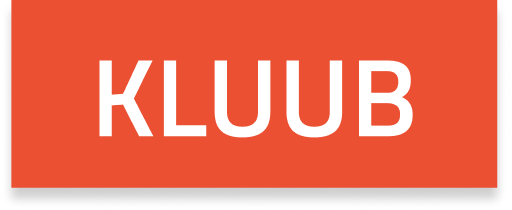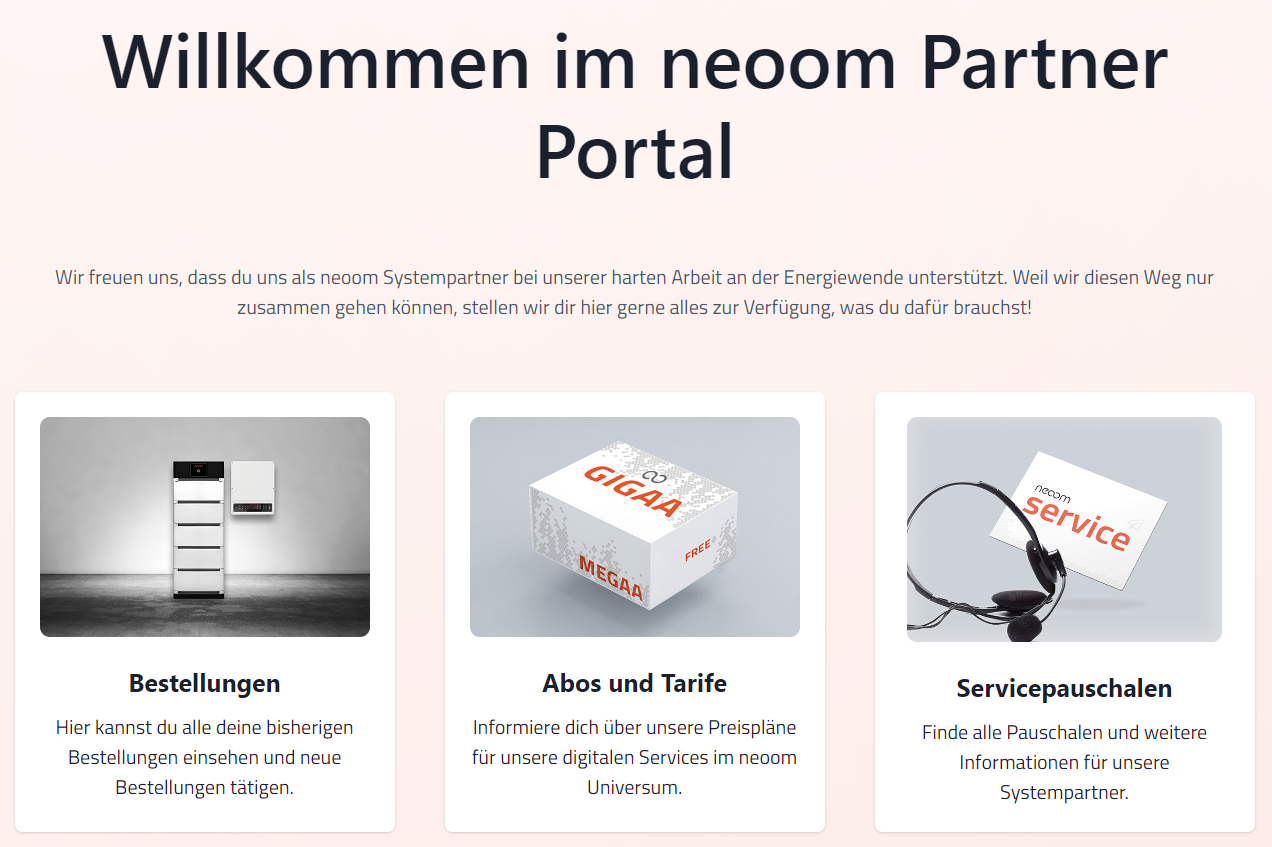Energy storage & PV subsidies for self-sufficient farms
Updated on: 21 April 2023
The most important facts about photovoltaic subsidies for agriculture in Austria
With the programme "Versorgungssicherheit im ländlichen Raum - Energieautarke Bauernhöfe" ("Security of supply in rural areas - energy self-sufficient farms"), the Austrian government is providing 100 million euros in funding for farms and forestry that want to become independent of fossil energy sources. Individual measures, combined measures and holistic energy concepts for farms are promoted in order to increase energy self-sufficiency. Special focus is on:
- New photovoltaic system with energy storage and emergency power function
- Retrofitting of energy storage with emergency power function for existing PV system
Request a quote for PV or storage >
Climate change, economic uncertainty and rising costs, especially for energy - farmers are facing many challenges right now. But thanks to a combination of photovoltaic and energy storage, farms can now successfully protect themselves against high energy costs and possible power outages by increasing their energy self-sufficiency. This makes their own farming more sustainable both ecologically and financially.
The Austrian federal government has recognised the need to support farms in this step and has announced a new subsidy of 100 million euros. In this article we explain what it is all about and what you should pay attention to.
Who is eligible for subsidies?
People who run an agricultural and forestry undertaking and possess the corresponding agricultural and forestry business information system number ("Land- und forstwirtschaftliche Betriebsinformationssystem-Nummer" - "LFBIS-Nummer") have the opportunity to apply for the photovoltaic and storage subsidy.
What is subsidised?
Several measures to increase the energy self-sufficiency of farms and agricultural undertakings are promoted. Special focus is placed on:
- new PV systems in combination with energy storage systems that have an emergency power function. This enables an uninterrupted power supply even in the event of a power outage.
- the retrofitting of existing systems with emergency power storage.
neoom
energy storage systems for businesses

BLOKK
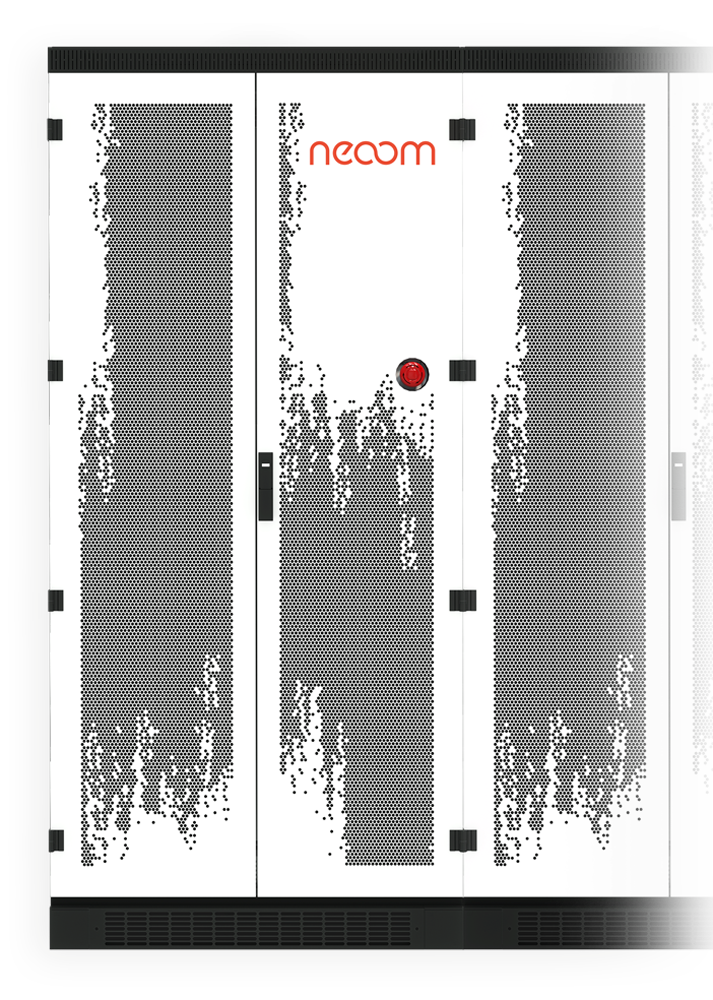
BLOKK Light
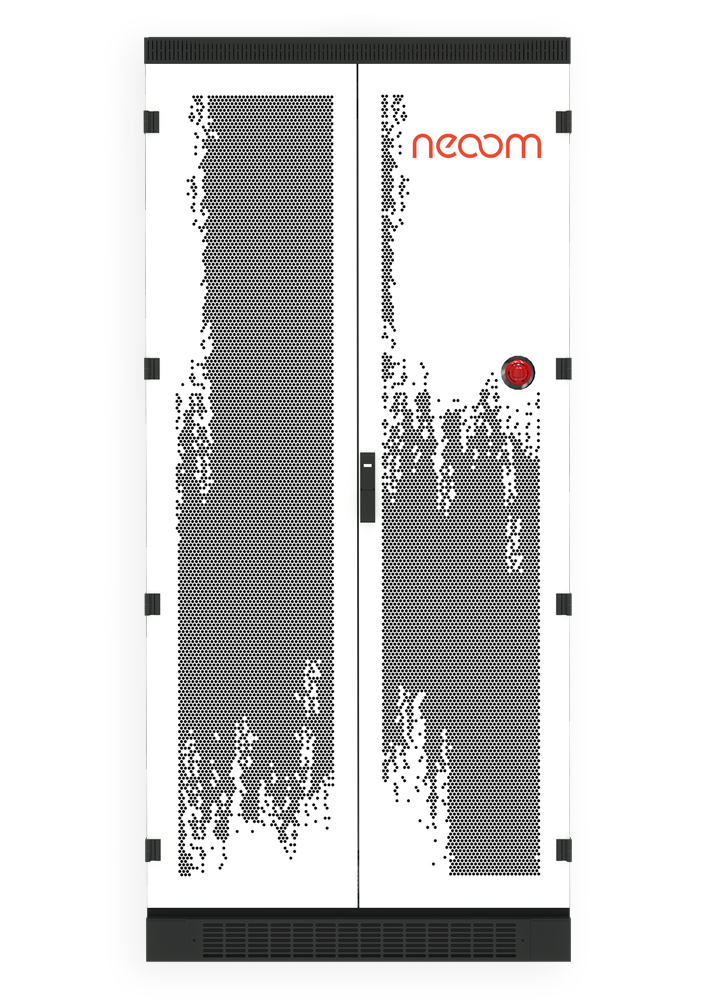
BLOKK Light NEA
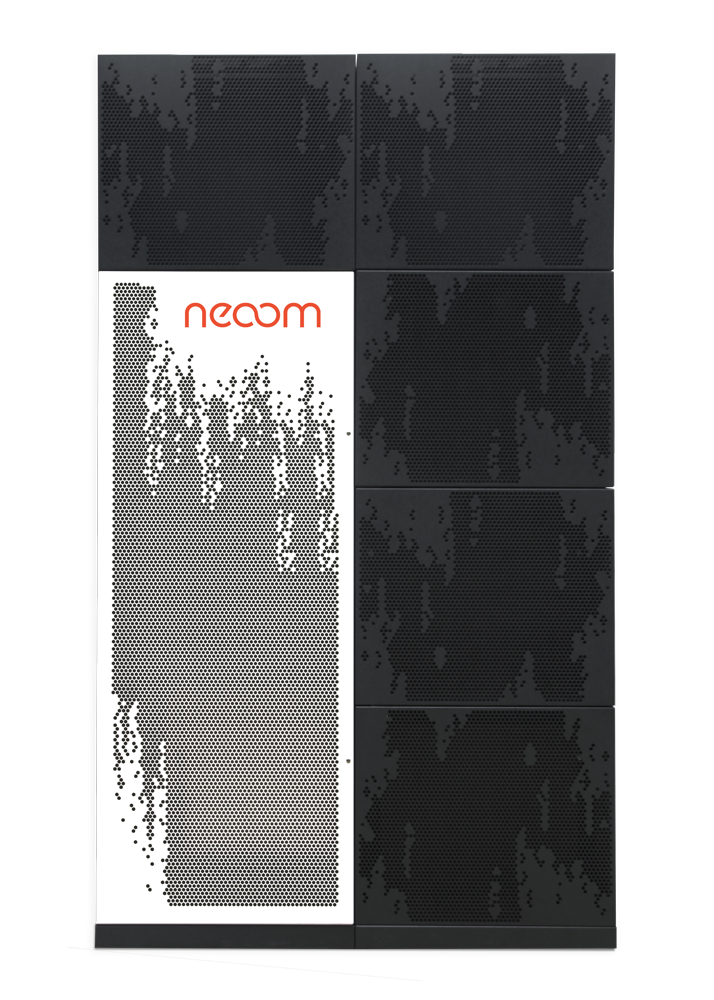
KJUUBE
When are subsidies available?
The programme call "Security of supply in rural areas - energy self-sufficient farms" („Versorgungssicherheit im ländlichen Raum – energieautarke Bauernhöfe“) started on 15.02.2023 - there is enough time until 2025 for planning and submission.
How much is the storage & PV subsidy for self-sufficient farms in 2023?
The amount of the subsidy depends on the energy measures implemented on the farm. A maximum of 250,000 euros can be granted per farm.
How do I submit my application for PV subsidies for farms?
The application for subsidies has to be submitted online at lw.klimafonds.gv.at. The subsidy programme comprises 4 modules (A, B, C or D), which are explained in more detail in the next section. Depending on the measures taken by the agricultural undertakings to become more energy self-sufficient, the application must be submitted for one of these modules.
Application for module A, B or C BEFORE implementation of the measure:
- Preparation of all necessary data and documents for the application.
Details of the applicant and the undertaking:
- Details of an authorised representative
- Information on the project
- Technical data of the measure for more energy self-sufficiency
- Project costs
- Amount of subsidy required
- Electronic application via lw.klimafonds.gv.at for the respective module
- The complete application documents will be checked and evaluated by the staff of the "Kommunalkredit Public Consulting GmbH" (KPC). If further information is needed to evaluate your project, a request for additional information will be issued.
- Once the project assessment has been completed, you will receive a funding agreement. By signing the enclosed declaration of acceptance, you accept the agreement as binding.
Application for Module D AFTER implementation of the measure:
- After implementing the measures for more self-sufficiency, the electronic application is submitted via lw.klimafonds.gv.at.
- Once you have completed your application, it will be evaluated. As soon as it is approved, the funding agreement is concluded with the letter regarding the payoff and the funding will be paid out.
Storage & PV funding for agriculture: Details of the subsidies
In Austria, the Climate and Energy Fund ("Klima- und Energiefonds") supports agricultural and forestry undertakings in their transition to self-sufficient farms. A total of 100 million euros is available until 2025 to increase the energy self-sufficiency of farms. All Austrian agricultural and forestry undertakings can apply for the PV subsidy.
The funding programme "Security of supply in rural areas - energy self-sufficient farms" ("Versorgungssicherheit im ländlichen Raum - Energieautarke Bauernhöfe“) promotes a variety of individual measures that contribute to self-sufficiency on agricultural farms and forestry. These include a photovoltaic system (with storage and emergency power function), the retrofitting of energy storage with emergency power function to an existing PV system, improved lighting and the preparation of an overall farm energy concept. In addition, combinations of measures are promoted that enable a permanent phase-out of fossil energy sources.
The subsidised measures for self-sufficient farms can be assigned to four different modules:
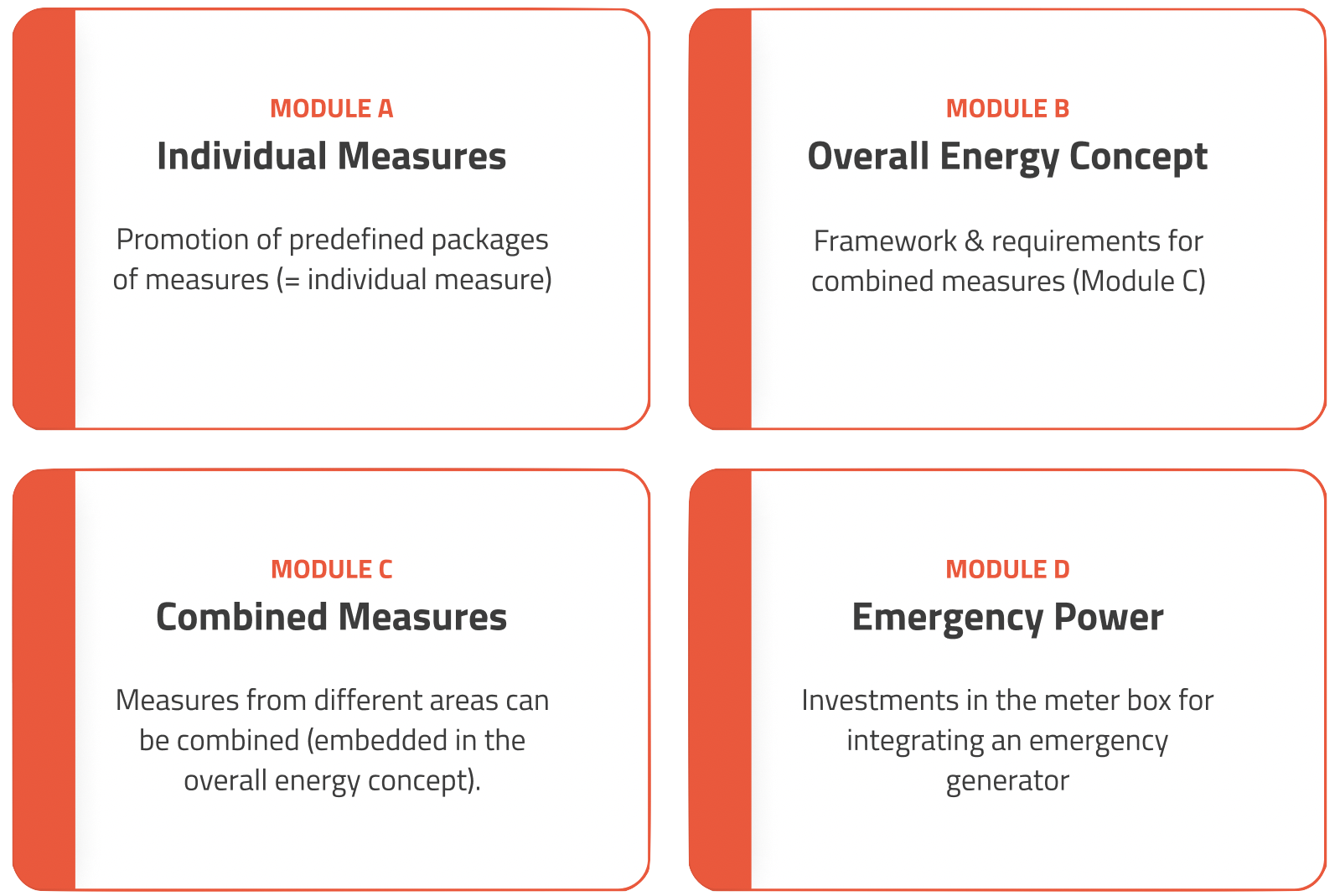
Module A "Individual Measures":
Module A allows you to apply for funding for a predefined package of measures as an individual measure, without prior energy consultation. The amount of the PV subsidy depends on the size of the installed photovoltaic system. There are three predefined packages:
Tip:
It is not possible to apply for only part of a bundle and the submission must be made BEFORE the implementation of the measure.
Module B "Overall Energy Concept":
In order to apply for subsidies for several combined measures (see Module C), an overall energy concept is required in the first place, in which these measures are embedded. Module B promotes the preparation of such an overall energy concept by a qualified energy consultant. It is thus the prerequisite for participating in Module C. The authorised energy advisor must prepare an overall energy concept in accordance with Module C, and the costs for this are subsidised by up to 70%. The concept must be available at the time of the final settlement of Module C and must include all investment measures submitted for funding.
Tip:
Very important: The application must be submitted BEFORE the implementation of the measure.
Module C "Combined Measures":
Combined measures based on the overall energy concept can be submitted in one or more applications. The following should be noted:
- Investment measures from the following areas can be selected:
- Energy efficiency (e.g. insulating buildings, LED lighting, energy-saving heating and cooling systems, etc.).
- Renewable energies & energy storage (e.g. solar systems and energy storage)
- E-mobility
- Energy management (digital monitoring of energy flows) - Each sub-application must implement at least three new measures, whereby the overall energy concept in the first application counts as one measure.
- Each application must contain a fully completed and signed consultation protocol that includes the submitted sub-measures and their energy flows.
- The amount of funding increases depending on the number of measures implemented and the degree of self-sufficiency achieved.
Tip:
Again, the submission must be made BEFORE the measures are implemented. This means BEFORE the first legally binding order for system components, BEFORE delivery, start of construction or BEFORE any other commitment that makes the investment irreversible.
Module D "Emergency Power":
This module provides a flat-rate subsidy of 850 euros per undertaking for the conversion of the meter box to enable emergency power. An additional module "Emergency Power" is offered for an initial investment measure on the meter box for integrating an emergency power generator and for preparing further measures.
Apply >
Tip:
This module can be submitted independently of the other modules and without seeking prior advice from an energy consultant. In contrast to modules A, B and C, funding is only applied for AFTER the measure has been implemented.
What is the procedure for the final settlement and payment of the subsidy for agriculture?
Module A, B & C:
Implementation:
- Module A must be implemented within 24 months.
- Module B must be implemented within 12 months, unless it is submitted together with Module C. In this case, the energy concept must be submitted at the latest by the final settlement of Module C.
- Module C must be implemented within 36 months.
Settlement:
- After implementation and payment of the services (Modules A, B and C), the settlement documents can be submitted electronically.
- Employees of KPC check the documents and pay out the subsidy.
- The final settlement documents must be received by KPC no later than 6 months after the end of the deadline for completion.
Module D:
Implementation:
- Submission takes place AFTER the implementation of the measure.
Settlement:
- Payment is made immediately after approval has been granted.
Stay up to date on current subsidies
Why are self-sufficient farms promoted in Austria?
By installing PV modules on their roofs, farmers can not only contribute to environmental protection and reduce their energy costs, but also generate additional income by selling their solar power. The purchase of such a system pays for itself for most farmers, because with the falling cost of solar energy, farmers can now generate their own solar power for less than half the cost of buying it, and the lifespan of modern solar modules is around 25 years. Smart energy management systems can optimise energy use and storage to maximise efficiency.
However, not every farmer can afford the high initial costs. For this reason, the Austrian government has launched the subsidised programme "Security of supply in rural areas - energy self-sufficient farms" ("Versorgungssicherheit im ländlichen Raum - Energieautarke Bauernhöfe"), which has a budget of 100 million euros and is aimed at farms and forestry undertakings that want to become independent of fossil energy sources. The aim is to make the farms energy self-sufficient so that they suffer less from the high energy prices.
With the programme 'Energy self-sufficient farms' ('Energieautarke Bauernhöfe') we want to accompany the great commitment of our farming families into the future. This increases the security of supply for everyone: for regional production, for our farming families and for consumers.
Norbert Totschnig
Minister of Agriculture
On the road to energy self-sufficiency with the support of neoom
Last but not least, due to this support, the right time has come for farmers to tackle their own energy self-sufficiency. neoom is happy to support you, because as experts for decentralised energy solutions, we offer everything you need to take the energy supply of your farm into your own hands. This makes you less dependent on large energy suppliers, equips your farm for the future and you can rely on a proven regional provider.
News from the
world of neoom

|

|

|
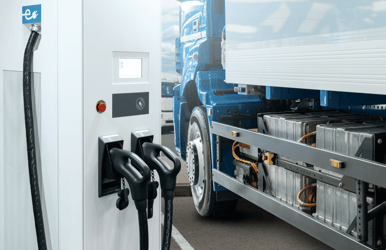
|

|

|

|

|

|

|

|

|

|

|

|
|||||||||||||||
| Partner | Blog | neoomiverse | instagram | Blog | Blog | neoomiverse | instagram | Blog | instagram | Blog | neoomiverse | instagram | Referenzen | instagram | Blog | Awards | Blog | Referenzen | instagram | Blog | neoomiverse | instagram | Partner | Blog | neoomiverse | instagram | Partner | Blog | neoomiverse | instagram | Referenzen | instagram | Blog | neoomiverse | instagram | Partner | Blog | Blog | neoomiverse | instagram | |||||||||||||||
Jahresrückblick: Die Highlights aus 2025
|
Smart einspeisen statt Strom verschenken - mit neoom & aWATTar
|
#neoomliveX 2025 – Doppelt intelligent in die Energiezukunft
|
Energie neu denken in der Logistik - mit smarter Infrastruktur
|
Wenn Visionen Wirklichkeit werden: EY Award 2025 für Nachhaltigkeit
|
Aigner Logistics - Von Diesel zu Null-Emissionen
|
Investitionsbooster: Neue Abschreibungsvorteile für PV-Anlagen
|
SAN Group setzt auf innovative EnergiekonzepteDie Vision hinter dem SAN Biotech Park „Unser Ziel war es, einen Ort zu schaffen, an dem Innovation und Nachhaltigkeit vereint sind“, erklärt Martin... |
6 Jahre neoom - das war #neoomlive06
|
#saisonauftakt 2025 für neoom Systempartner
|
Jahresrückblick: Die Highlights aus 2024
|
NOVOMATIC setzt auf Solarenergie: Nachhaltigkeit im Fokus„Die NOVOMATIC AG ist einer der weltweit führenden Gaming-Technologiekonzerne und Branchenführer in Europa“, sagt Christoph Neubauer, Director of... |
neoomliveX Schweiz: Gemeinsam Innovation und Dezentralisierung für die Energiewende ...
|
Die Zukunft der Energie gemeinsam gestalten – Let's do it!Gemeinsam in die Energiezukunft Mit der zentralen Frage: „Wie können wir gemeinsam mehr Energie liefern?“ gab Walter Kreisel, CEO & Gründer neoom... |
Level up - die Highlights der #neoomliveX 2024
|
|||||||||||||||
| Weiterlesen | Weiterlesen | Weiterlesen | Weiterlesen | Weiterlesen | Weiterlesen | Weiterlesen | Weiterlesen | Weiterlesen | Weiterlesen | Weiterlesen | Weiterlesen | Weiterlesen | Weiterlesen | Weiterlesen |
